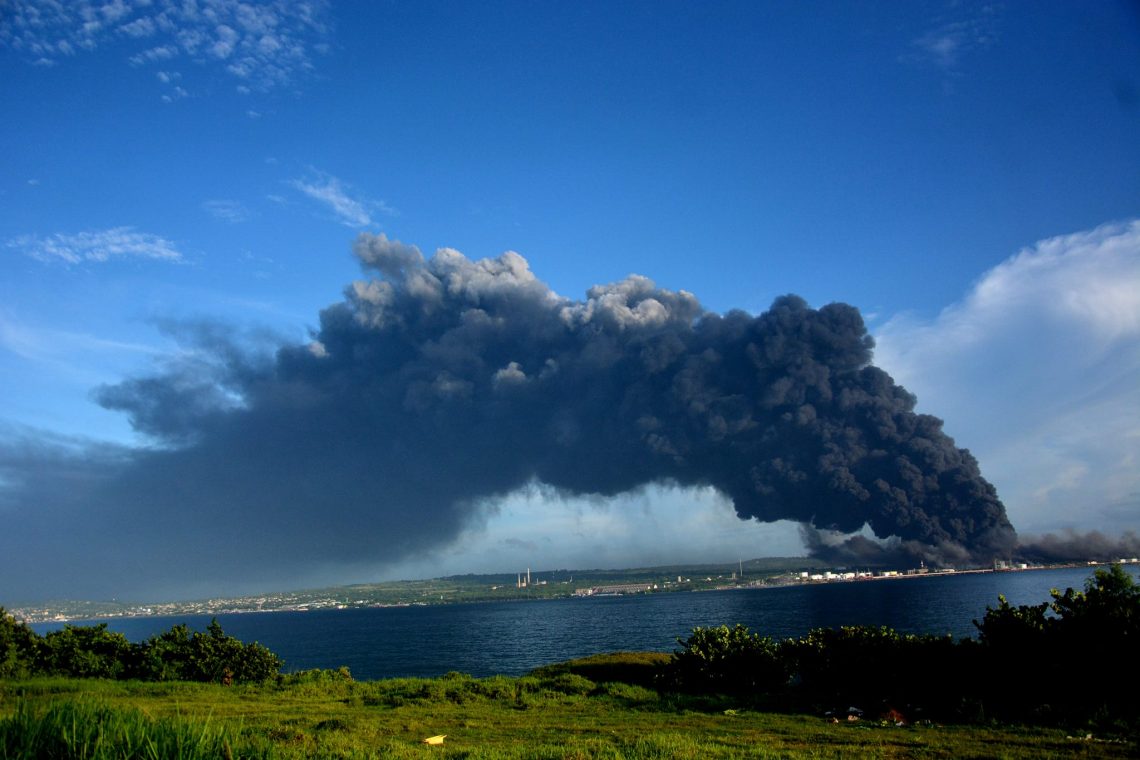Three days after officially declaring the fire at the Matanzas Supertanker Base“there is no evidence” of acid rains, contamination in the dams or in the Matanzas bay as a result of the incident, according to specialists.
According to Oscar García Martínez, delegate of the Ministry of Science, Technology and Environment (Citma) in that Cuban province, the studies carried out on the ground indicate that “the levels of gases from the burning of fuel during the incident did not reach concentrations high enough to produce that kind of precipitation.
“If acid rain fell at some point, it must have been an extremely rare event, but to date we have no proof that it happened,” said the researcher, aforementioned by the local newspaper Giron.
Oscar García Martínez, delegate of the @citmacuba in #Massacresstated that there is no evidence of acid rain, contamination of the dams or the bay as a result of the fire at the supertanker base. @ElbaRosaPM
read on #PeriodicoGiron:https://t.co/dsVOlgqnAe
– Girón Newspaper (@PeriodicoGiron) August 15, 2022
García Martínez explained “from the beginning a network of 16 links was activated to monitor air quality and other perceptible parameters.”
He also explained that, in response to reports from the population in places such as the Yumurí Valley, “the presence of blackened water was confirmed due to the amount of suspended particles, due to the dense column of smoke generated by the burning fuel tanks, although without consequences for the health of people and animals”.
However, he noted that on the third day of the incident, rainwater samples were taken with pluviometers from the National Institute of Hydraulic Resources, as well as vegetables, vegetation, pastures and soil, which are currently in the process of being analyzed and whose results “will be known in the coming weeks.”
The Yumurí Valley after the rain contaminated by the huge cloud caused by the #fire at the Supertanker Base of #Massacres.
Photos: Girón newspaper.#ForceCuba #ForceMatanzas #Cuba pic.twitter.com/zqDPzMiBp1
— OnCuba (@OnCuba) August 9, 2022
In addition, the Citma delegate in Matanzas stated that “neither the dams nor the groundwater in the surroundings of the province show signs of contamination” as a result of the fire unleashed on the night of Friday, August 5 as a result of lightning and that ended affecting four large fuel tanks.
The specialist also assured that “the barriers built on land to contain the spilled oil were effective, even more so when dealing with national crude oil because it is very viscous, and it did not spill into the wide bay of environmental and socioeconomic importance,” according to the report. press office.
He said that the incident generated a large volume of waste and that “collecting it all will take some time” and added that the Cuba Petroleum Union (Cupet) “has special pools to store and treat this product through bioremediation.”
Giron specifies that due to the magnitude of the fire, which so far has left a balance of two dead, 14 missing and a hundred injured, “specialized teams monitor air quality with modern equipment, to identify concentrations of volatile organics, particulate matter , carbon dioxide and nitrogen dioxide in the western provinces of Cuba”.
Likewise, he recalls that, throughout these days, Citma authorities and the Ministry of Public Health (MINSAP) have reiterated that “the dense plume of gases generated by the fire did not cause an increase in respiratory or other ailments in the population. ”, according to evidence found in medical centers.
Despite this, while the fire remained active, the authorities recognized an increase in the presence of gases in the air as a result of the incident and recommended that the population use the mask to protect themselves.
In addition, given the reports of contaminated rainfall in Matanzas and other western Cuban territories, they also called on people to avoid exposure to the rains.






